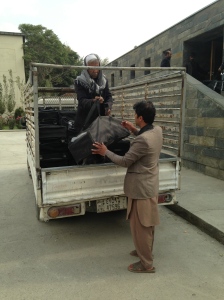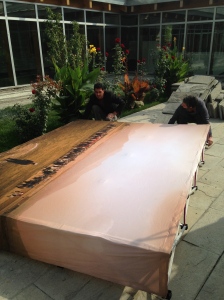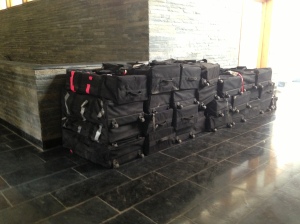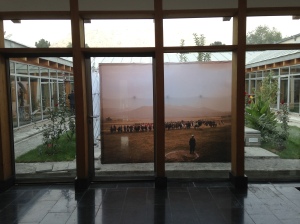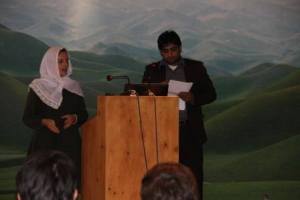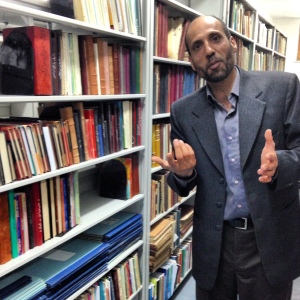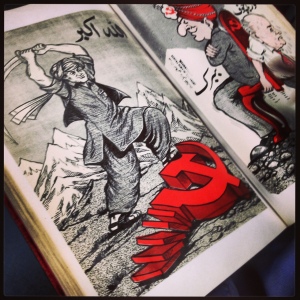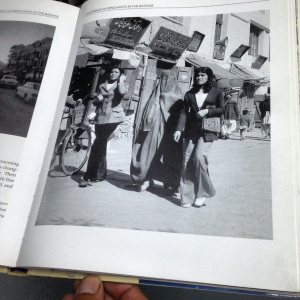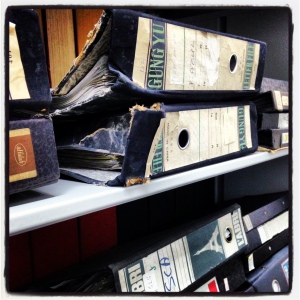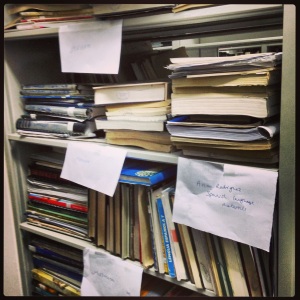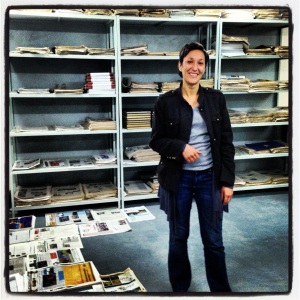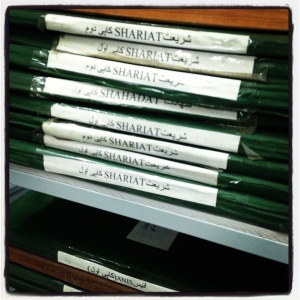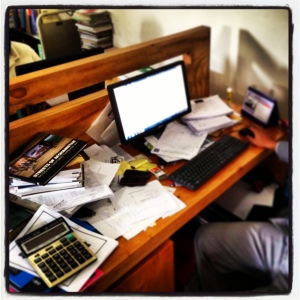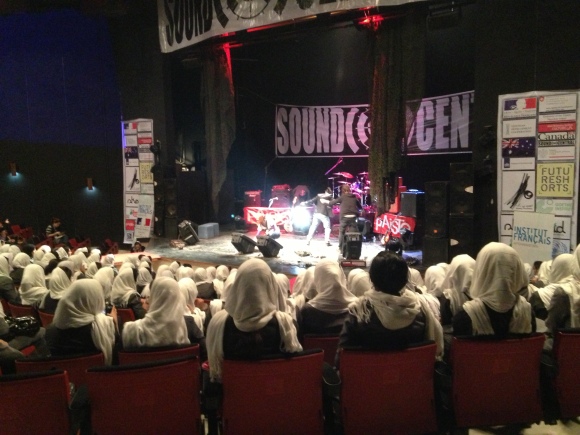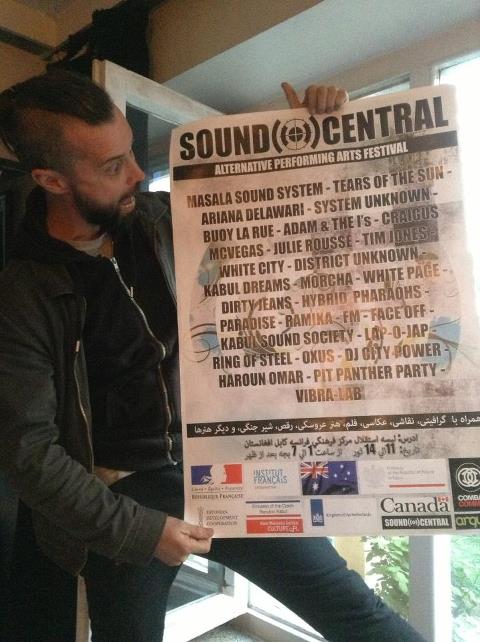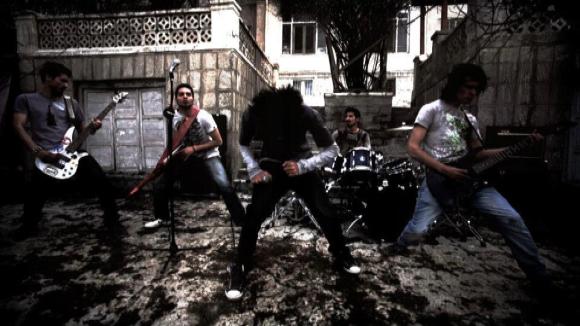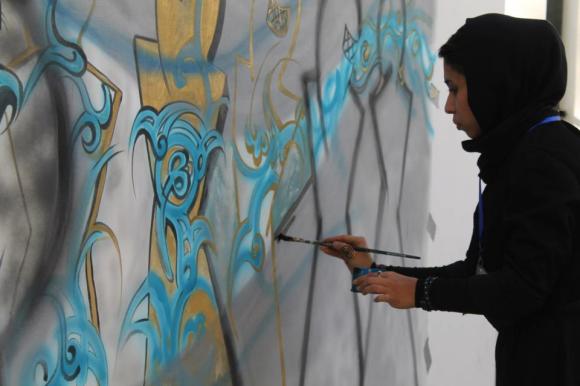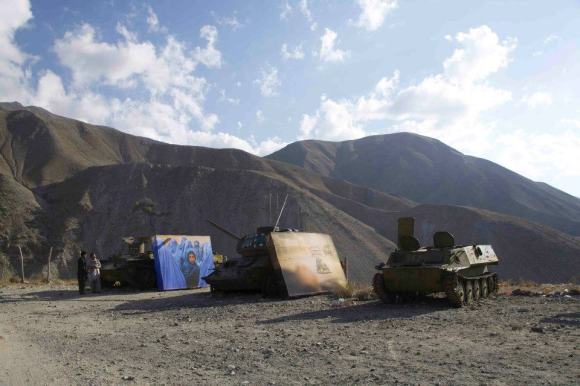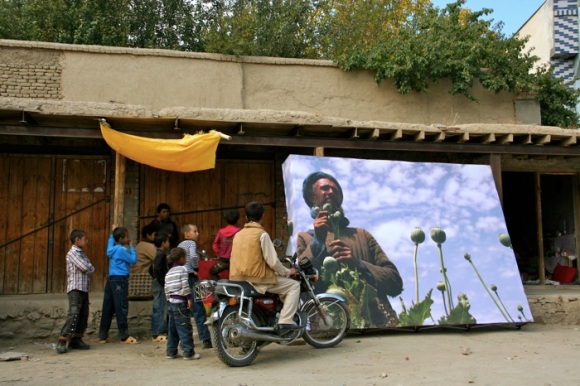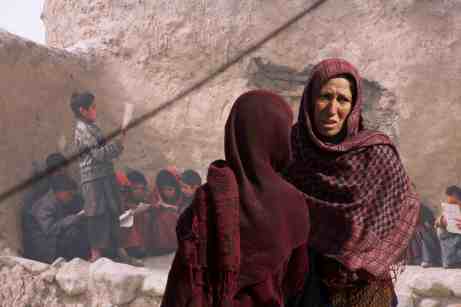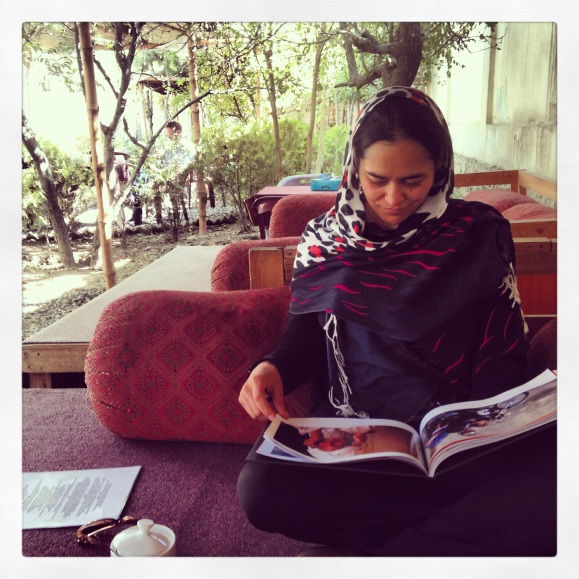
I had the pleasure of meeting with one of the talented Streets of Afghanistan photographers, Mariam Alimi, today in Kabul for lunch. I met her briefly 5 years ago, in November 2008, when I met all the Afghan photographers in Kabul for the first time at AINA Photo Agency to discuss the inception of the Streets of Afghanistan exhibition. I delivered her a copy of the book and over pomegranate juice and lunch we talked about the exhibition and the power of voice, the power of photography. As we talked about her career and how she started as a photographer in 2006, we talked about courage, and activism, and women’s rights, and our cultures. Mariam said at one point when talking about her start in photographer, “I was not so brave as I am now.” When I asked her to explain I was surprised to learn that it was intrinsically linked with the key photograph of hers that we used in the exhibition.
One of her first photographs was one she took in Heart, its one that we had in the exhibit and its one of my favorites.

This man was a poppy farmer near Herat decades ago, before the mujahedeen. During the civil war and the Taliban times he moved to Iran. While there he learned about saffron cultivation. When he returned in 2002, he starting planting saffron thanks to the help of an organization that gave him a few bulbs from the Netherlands. Each year his crop grew a little more and eventually he started sharing the bulbs with other farmers to cultivate. When Mariam met him it was to interview him as part of an organization to make a documentary about saffron cultivation. After they got done filming him, he asked if he could hear what he sounded like and they put the headphones on him and played back his interview. This photo was taken at the moment he first heard his voice and the look of pure joy hits me every time I see the photo.
But Mariam almost wasn’t there to take the photo. As a single Afghan woman, she lived at home and had to ask her father’s permission to go with her organization to Herat. She had never traveled without her family before, and she was scared to ask her father. She invited her boss, a foreign woman, to come to dinner and meet her family and in the conversations that followed, she asked Mariam’s father for permission to come with her to Herat. He agreed to allow her to go, and it was the first step of a journey that changed Mariam completely. She continued to ask permission to travel and now she has traveled all around Afghanistan, and to many countries, including the United States.
When we started talking about how change for women in Afghanistan starts, she gave me a beautiful example that reminded me of my own journey. “Everyone when they are young thinks, “I want to change the world”. As we get older, we realize that we should start by changing our country. But the difficulties make us realize that we should focus on changing our community. Then we realize that our own families are part of the larger problem so we should look at changing our family. Finally, with age and wisdom we realize, everything starts with us, as individuals, and that real change must happen from within each one of first. “
Mariam leads by this example. She is unusual for Afghan women of her age, one of the handful of female photographers in Afghanistan, she walks the streets by herself, meeting strangers, taking photos. When she speaks with young girls, they often say to her, “I am not as brave as you, I could not do what you do”. Mariam tells them that it’s not a matter of being brave or not brave. It’s about taking a small step in the direction you want to go. Change yourself first, so that others see you for what you really are, and live your life in a way that reflects what you believe, and those around you change in unexpected ways in reaction to you.
You can see more of Mariam’s work on her website and her work in the groundbreaking, Streets of Afghanistan exhibition, in the newly released book available through Hatherleigh Press and Random House. Streets of Afghanistan book

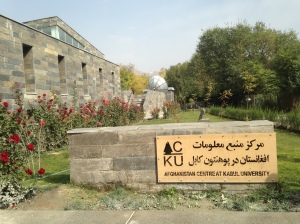 The Streets of Afghanistan exhibition has a Afghan home in Kabul at the prestigious Afghanistan Center at Kabul University, ACKU. The center opened in 2013 and houses the Afghan Archives, and its auditorium hosts many cultural events. It is a fitting temporary home for the exhibition so that it can continue to be seen by Afghans for years to come at the Kabul University campus.
The Streets of Afghanistan exhibition has a Afghan home in Kabul at the prestigious Afghanistan Center at Kabul University, ACKU. The center opened in 2013 and houses the Afghan Archives, and its auditorium hosts many cultural events. It is a fitting temporary home for the exhibition so that it can continue to be seen by Afghans for years to come at the Kabul University campus.